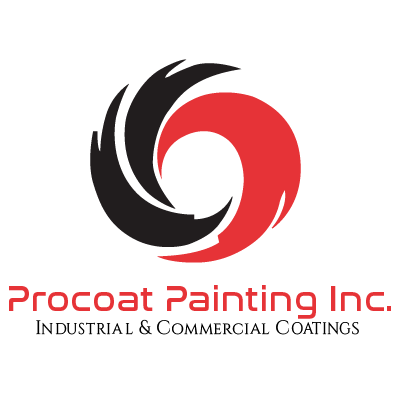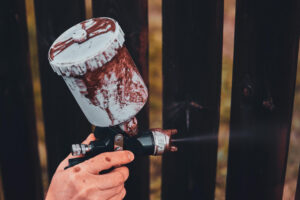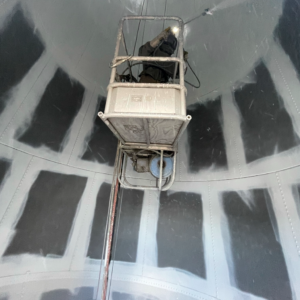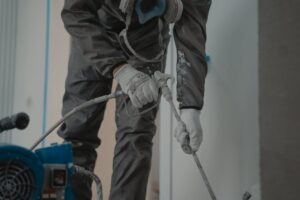
Rust can be a big problem for factories, causing damage that is costly and disruptive. It’s like an iron-eating monster that slowly weakens metal structures, leading to expensive repairs or replacements. Understanding how to keep rust away can save a lot of trouble and money.
One of the simplest and most effective ways to protect metal surfaces in a factory is by using paint. Specially designed anti-rust paints form a barrier that stops moisture and oxygen from reaching the metal, which are the main culprits behind rust formation. This protective layer not only preserves the appearance of a facility but also protects its structural integrity.
By choosing the right paint and applying it correctly, factory owners can significantly increase the lifespan of their equipment and structures. There are many factors to consider, such as the type of paint to use and the application process, but with the right approach, it’s easy to keep rust at bay and maintain a smooth-running operation.
Understanding Rust and Its Impact on Factories
Rust is a pesky problem for factories that heavily rely on metal structures and equipment. It starts when iron or steel is exposed to moisture and oxygen, causing a chemical reaction known as oxidation. This reaction leads to the formation of rust, which is a flaky, reddish-brown substance that weakens the metal over time. High humidity, rain, and even the salty air near oceans can speed up this process, making it a constant threat to industrial facilities.
When rust attacks, it brings along several unpleasant effects. First, there’s the structural damage. Rust eats away at the metal, compromising its strength and stability. This can pose serious safety risks, especially in factories where heavy machinery and support beams are involved. Rust can also damage moving parts, affecting machinery efficiency and leading to costly downtimes.
The economic impact of rust is significant. Businesses often face hefty expenses for repairs, replacements, and sometimes even overhauls, which can disrupt operations and reduce profits. Preventing rust isn’t just about maintaining a shiny surface; it’s about shielding the factory’s core components from untimely wear and tear. Understanding rust’s impacts highlights the importance of proactive measures and defensive strategies like protective paint.
The Role of Paint as a Protective Barrier
Paint acts as a crucial first line of defense against rust by creating a barrier that blocks moisture and oxygen from contacting the metal surface. When properly applied, paint seals off these elements, which are key players in the rust formation process. This simple yet effective measure helps keep metal surfaces intact, preserving both their functionality and appearance over time.
Anti-rust paints and coatings come with special features designed to enhance protection. They may contain rust-inhibiting compounds that neutralize corrosive elements, preventing them from attacking the metal beneath.
Some paints are formulated to be especially thick, providing a durable and long-lasting shield. Others may incorporate advanced technology that allows them to expand and contract with temperature changes, ensuring they adhere well even under fluctuating conditions.
Choosing the right anti-rust paint involves looking at factors like the environment the factory operates in and the specific type of metal surfaces present. A well-chosen paint not only keeps rust at bay but also reduces maintenance efforts and extends the lifespan of industrial equipment. Armed with protective paint, factories can stand firm against the ever-looming threat of rust, ensuring smoother and safer operations.
Selecting the Right Type of Paint for Rust Prevention
Choosing the right paint for rust prevention is a crucial step in ensuring long-term protection for your factory’s metal surfaces. Not all paints are created equal, and selecting the most suitable one depends on several factors. It’s important to compare different types of paints that are specifically designed to handle the challenges of an industrial setting.
When comparing paint types, consider epoxy-based paints and polyurethane coatings. Epoxy paints are excellent for heavy-duty protection due to their thick and durable nature. They are resistant to chemicals and abrasions, making them ideal for harsh environments. Polyurethane coatings, on the other hand, offer flexibility and UV resistance, which is perfect for areas exposed to sunlight and outdoor elements.
Several factors come into play when choosing protective paint. Assess the environmental conditions of your factory—high humidity, temperature fluctuations, and exposure to chemicals all influence your choice. Also, consider the type of metal surface and its current condition. Some surfaces may require a primer before applying the final coat of paint. By taking these factors into account, you can select a paint that offers the best defense against rust for your specific needs.
Application Best Practices for Maximum Protection
Applying the paint correctly is just as important as selecting the right type. Start with a thorough preparation of the surface. This involves cleaning the metal to remove rust, dirt, and grease. Sandblasting or using a wire brush can help achieve a smooth surface. Make sure the surface is dry before proceeding to avoid trapping moisture beneath the paint.
Follow this step-by-step guide for ideal results:
1. Clean the Surface: Remove any existing rust and debris.
2. Apply a Primer: Use a suitable primer to enhance paint adhesion.
3. Select the Right Conditions: Paint when temperatures are moderate and humidity is low.
4. Use Proper Techniques: Apply even coats with the recommended tools, such as brushes or sprayers.
5. Allow Adequate Drying Time: Let each layer fully cure according to the paint manufacturer’s instructions.
Regular maintenance is key to prolonging the effectiveness of the paint. Check for chips or cracks and touch them up promptly to maintain the protective barrier. Regular inspections for signs of rust allow for quick interventions, reducing the risk of extensive damage.
Conclusion
Maintaining your factory’s infrastructure involves taking proactive steps to combat rust. With the right paint and proper application techniques, you can significantly extend the lifespan of metal surfaces and machinery. This not only safeguards your investment but also ensures smoother operations and safety within the facility. By focusing on preventive measures, you foster a more reliable and efficient industrial environment.
For factory owners looking to shield their operations from rust, choosing the right partner is essential. Procoat Painting Inc. offers expert guidance and tailored factory painting solutions to meet your specific needs, ensuring comprehensive protection and peace of mind. Contact us today to learn how we can help you arm your factory against the relentless challenge of rust.




